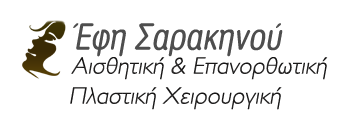Whenever the skin is injured, whether due to an accident or intentionally with some surgical procedure, the result is the creation of scars. In plastic surgery operations, based on our knowledge and experience, we have the ability to “hide” scars in parts of the body that will be less visible.
So for example the abdominoplasty incision is hidden by the bikini and the face lift incision behind the ears and in the hair. The final shape of the scar that forms on the body depends on many factors such as the tension of the skin at each point, the presence of infection or inflammation and the type of skin of each individual and the way it reacts to injury.
So we see scars on the same part of the body in patients that are barely visible and in another patient they are swollen and red. Also in the same person different age and different parts of the body make different scars.
For example we know in plastic surgery that scarring in adolescence tends to be worse than in older age and certain areas such as the shoulders and sternum scar much worse. In plastic surgery we choose the right area and direction for our incisions but in cases of injury this choice does not exist.
Hypertrophic scars: They are red, swollen and itchy for a few months after the skin is injured. Later they become flatter and less red.
Keloids: They look like hypertrophic scars but continue to grow on the adjacent normal skin, are hard and usually do not go away but need special treatment. Keloids often appear after navel or earlobe piercings.
Treatment of hypertrophic scars and keloids
Time really is the best doctor in this particular case, as as time goes by normal scars and hypertrophic ones will mature and become less obvious. However, we often try to help this process and especially regarding keloids there are specific treatments.
Pressure: All scars improve with pressure which can be applied using special bandages.
Gel or silicone cream or special adhesive silicone pads: We help a scar to mature and whiten.
Steroids: Either in the form of special strips soaked in cortisone solutions or with injections of triamcinolone into the keloid. Usually the injections are given every 4-6 weeks and have good results.
Superficial cutaneous radiation therapy within the keloid: Treatment used on large keloids such as on the sternum after open heart surgery or abdominal incisions. It is combined with previous removal of the skin lesion.
Surgical removal of the keloid: The operation is performed within the limits of the damage as we are not allowed to cut the adjacent normal skin which will then show the same problem. It is combined with steroid injection immediately during the operation and with post-operative radiation in large lesions.
Surgical correction of scars: Unsightly scars that are often contrary to the skin’s tendency, that have experienced stretching, shrinking, can be improved with some specific surgical techniques of plastic surgery (Z-plasty, V-Y plasty, etc.).
Removal of large scars and repair of the deficit using a tissue expander: Sometimes, large scars from either extensive trauma or full-thickness burns cannot be improved and the only way is to remove them, but there is not enough skin to close the deficit that it will be created. In these cases the plastic surgeon can place in the adjacent normal skin tissue expanders that will gradually “create” new skin. In the second year, the extensor and the scar are removed, and the skin that has been created covers the defect.
What you can do to improve the appearance of a scar
After the stitches have been removed and the wound has healed, it helps to massage the scar with a moisturizer such as Bepanthol for at least 2 months. Your doctor will assess whether further treatment is needed. However, patience is needed as the scars improve up to 18-24 months after their creation. It is very important to avoid exposing the scar to the sun as it is very likely to cause discoloration or reactive hyperpigmentation that is very difficult to treat.
